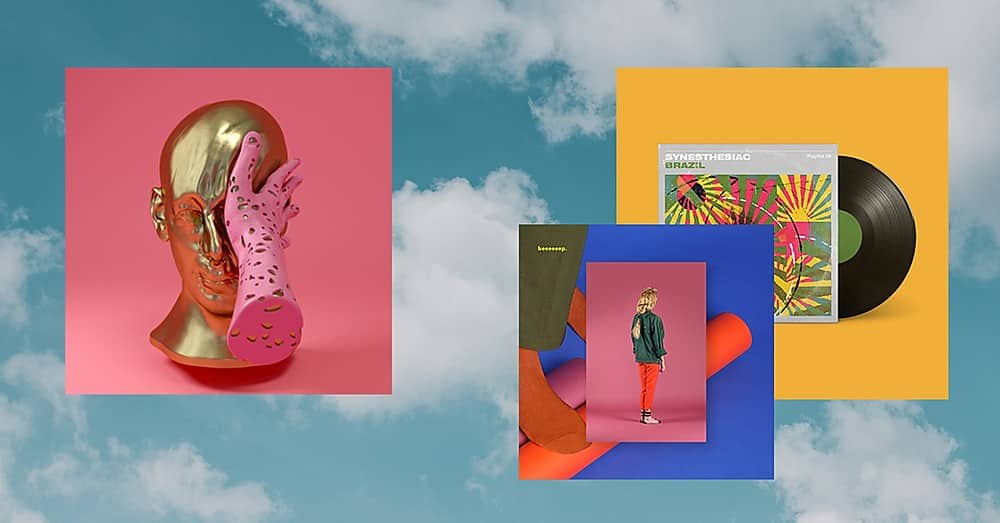Starting out as a graphic designer is an exciting prospect, but it can be intimidating to consider the scope and scale of the design world. As people become increasingly concerned with visual communication, the ability to understand and express a company or an individual’s vision has made the role of the designer more powerful than ever.
Once you have the passion and talent, the next step is to build a strong foundation from which to establish yourself as a professional designer—wondering how to do this? Read on to discover our best tips for beginner designers to follow.
1. Keep it light.
As a graphic designer, your computer is one of your most important tools, so it’s a good idea to take excellent care of it. Media files can be heavy and take up a serious amount of space on your hard disk, as well as cause your computer to slow down. Take the time now to burn your old work onto DVDs and free up your PC’s memory for all the work to come. This can be psychological, too. You’re opening up space for all that great inspiration to flow.
2. Stay organized.
While you’re at it, organize! We know that creative types can be a little chaotic when it comes to keeping their work in order, so get into an early habit of defining your process, structuring your projects, and making sure to keep your folders and files clearly labeled. It will help keep stress levels low, we promise!
If you want to be super organized, why not clear out some space on your PC by using DVD burning software? This way, you can hang onto all of your old design projects on DVD, while saving lots of useful computer space for your current projects.
3. Learn and consolidate.
It takes time to build a professional portfolio and a network of clients, so use this initial phase to perfect your basics. Subscribe to a design forum to read about new tools and techniques, and become a pro at Photoshop or Illustrator. Do you have a niche talent you’re particularly proud of? Work it into your portfolio, so you can really shine! You could even consider getting a degree to truly hone your skills.
On the other hand, if you feel you lack specialization, now is your chance to hone in on one aspect of design that will make you stand out from the crowd. The more prepared you are now, the easier it will be to do fantastic work on your future projects.
4. Get creative.
Think you’ve got your style down? It’s time to innovate! Get out of your comfort zone and experiment by creating mood boards, filling your social media feed with the designers and campaigns you love, and getting inspired by new color palettes, fonts, and compositions.
Put on your graphic designer glasses in everyday situations and keep your eyes open for inspiration, because it’s everywhere! One of the best tools a great designer has is the ability to adapt to a client’s needs, and the more you’ve experimented, the more chances you’ll have of nailing their vision.
5. Communicate.
Graphic design is all about visual communication, but the kinds of dialogues you’re having with yourself and your clients are almost as important as the work itself. It may seem simple, but when you receive your brief, make 100% sure that you and your client are on the same page, and if you feel something is missing, schedule an extra call with them to clarify.
Trust us. It will save you time later in revisions. Once you’ve finished a project, stay on excellent terms with your client by letting them know that their feedback is invaluable and asking for an honest evaluation of your work. Make sure to pose smart, specific questions, and don’t be afraid of constructive criticism. It’s a chance to gain a new perspective. Finally, do a self-evaluation! Ask yourself if there’s anything you could have done better and answer truthfully. This is how you can identify holes in your skillset, which you can then improve for next time.
6. Finally, be patient.
The world of design is vast and varied, and it can be daunting to someone who’s just starting their career. Maybe you’ve just finished design school or are making the switch to become a full-time designer, or perhaps you want to take on some freelance design work to boost your income. Either way, it may seem like there’s so much still to learn…and there is! However, it’s important to remember that even the most experienced designers were once beginners just like you. You’re probably in the design industry because you’re passionate about it, so take your time and enjoy the process. Each lesson you learn now is helping you to define your own artistic journey and build your unique creative identity.












